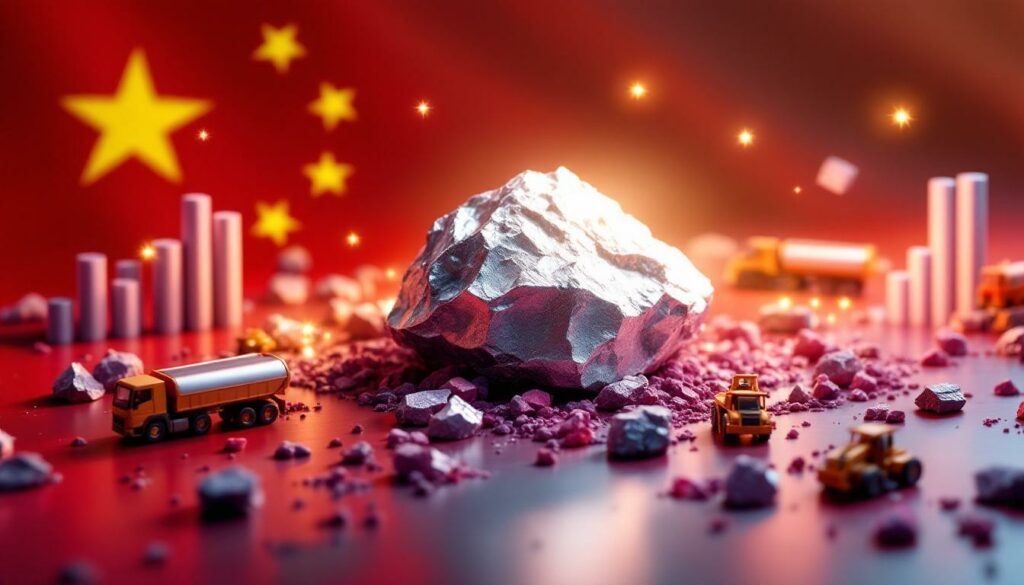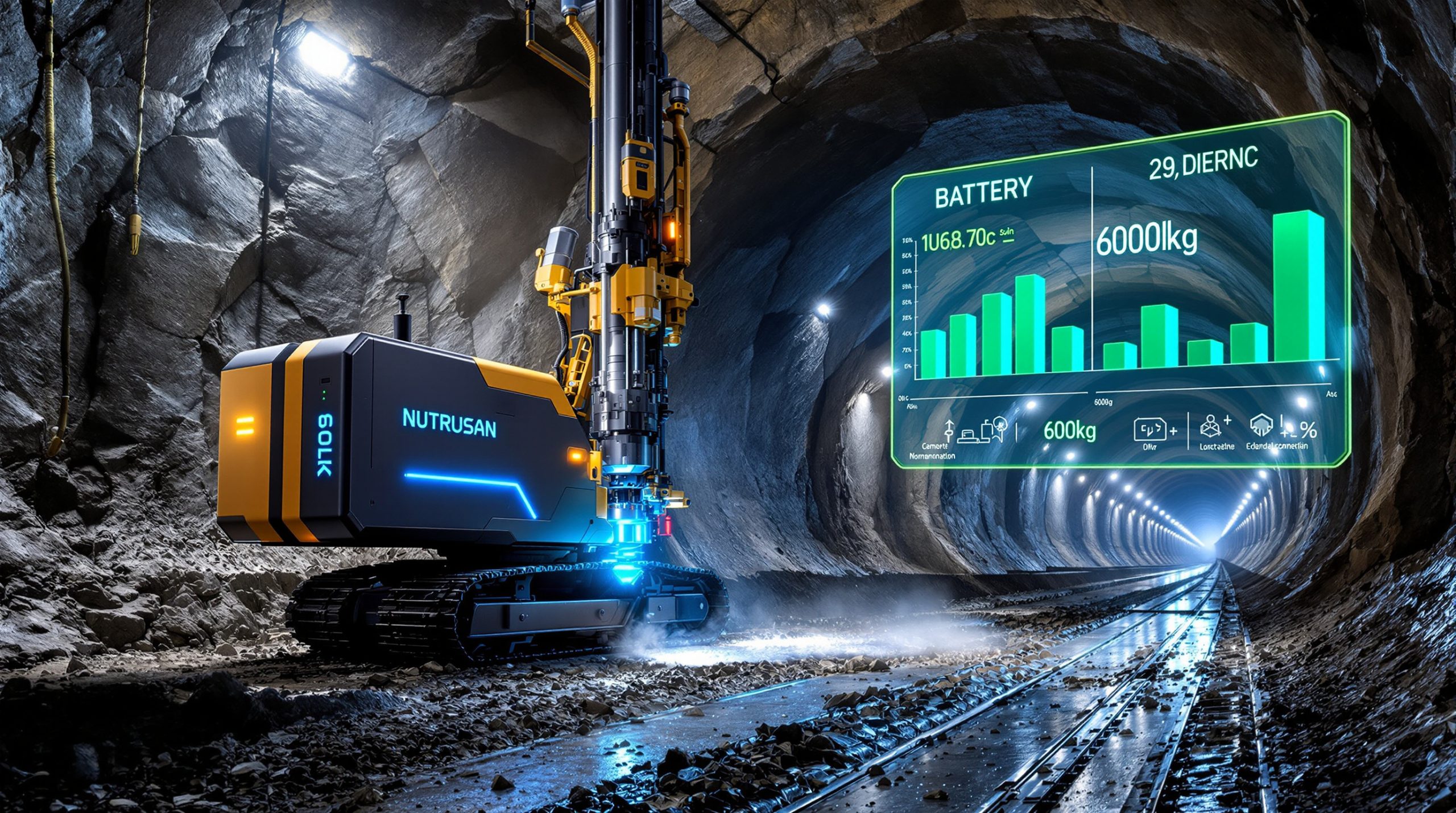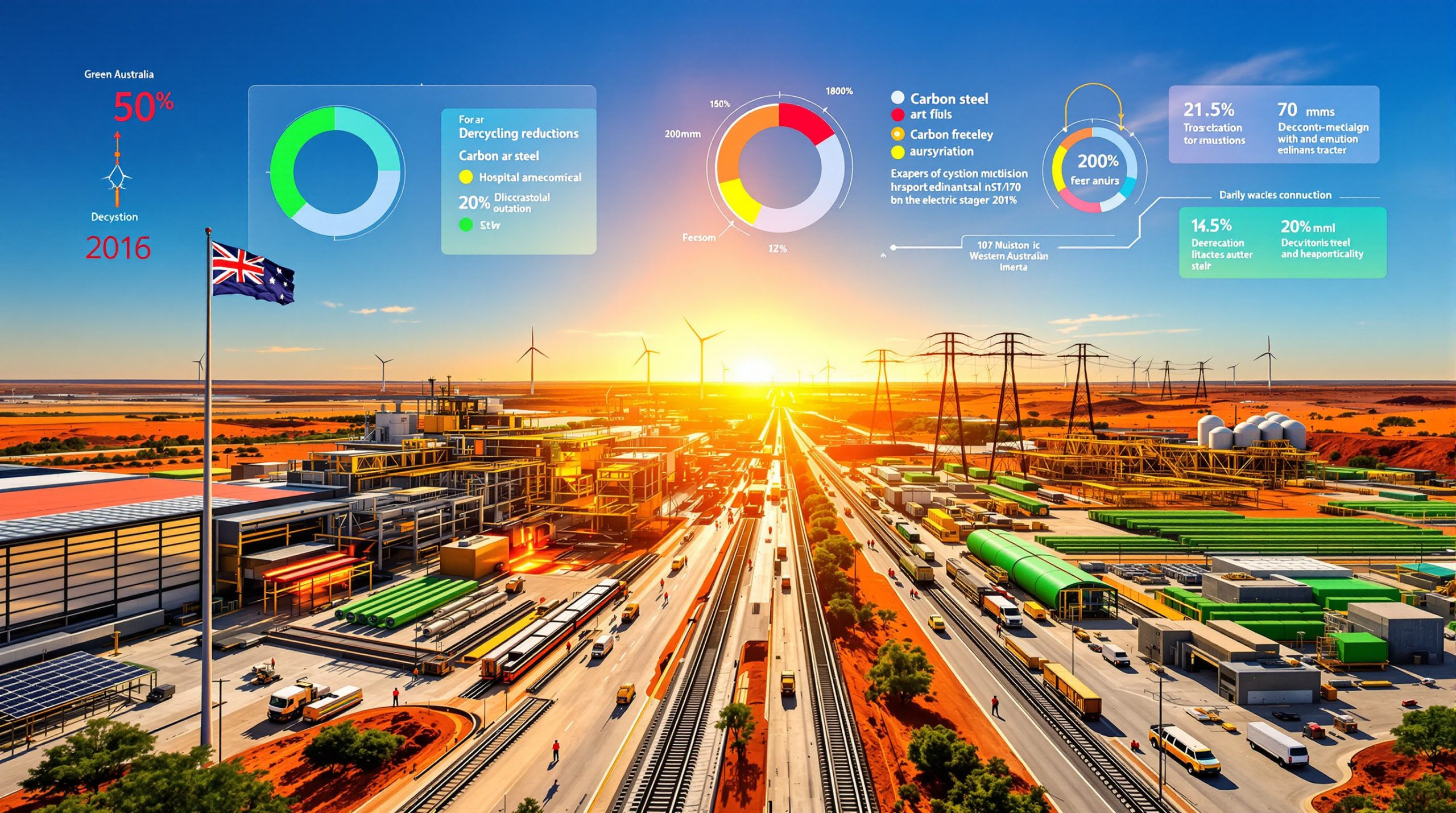What is Causing China's Rapid Rise in Lithium Production?
China's strategic push into lithium mining has positioned the nation to become the world's dominant producer by 2026, according to Fastmarkets forecast data. This remarkable ascent from third place in 2023 to projected market leader represents one of the most significant shifts in the global battery materials landscape in recent years.
The Strategic Push for Lithium Dominance
China's government has implemented a comprehensive national strategy to develop its domestic mineral resources, with lithium extraction at the forefront. Unlike profit-driven Western mining operations, Chinese producers demonstrate remarkable resilience against market pressures.
"China's got a very clear strategy to develop its mineral resources," explains Paul Lusty, head of battery raw materials research at Fastmarkets. "This continued production—despite lack of profitability—makes sense when you consider government support, municipal pressure to preserve jobs, and strategic market-share positioning."
This coordinated approach combines central planning with local implementation, creating a uniquely resilient production model that continues operation through market downturns that have forced cutbacks in Australia Lithium Innovations and elsewhere.
Lepidolite Mining: China's Unique Advantage
China's production growth primarily stems from lepidolite mining—a hard rock lithium ore abundant in southern China, particularly in Jiangxi province. While this extraction method costs significantly more than brine operations used in South American production, China has embraced the challenge.
Lepidolite processing requires intensive grinding, acid leaching, and multiple purification steps that consume more energy than geothermal brine extraction. These operations generate toxic byproducts including thallium and tantalum that require sophisticated waste management systems—costs that many Western producers find prohibitive but that Chinese companies have accepted as part of their strategic positioning.
This willingness to pursue technically challenging and environmentally complex extraction methods highlights China's determination to achieve market dominance regardless of short-term economics.
Production Despite Profitability Challenges
Chinese lithium miners maintain production levels despite widespread unprofitability across the sector—a stark contrast to Western operations that quickly curtail output when prices fall below production costs. Several factors contribute to this persistence:
- Government policy support through subsidies, tax incentives, and regulatory accommodation
- Municipal pressure to preserve local jobs and economic stability
- Strategic market share positioning ahead of anticipated demand increases from EV growth
- Long-term supply chain control objectives as part of broader industrial policy
A telling example is CATL, China's battery manufacturing giant and a major lepidolite producer, which temporarily paused production at a key mine in September 2024 when lithium prices reached multi-year lows, only to resume operations by February 2025 despite minimal price recovery. This resilience demonstrates China's commitment to maintaining production capacity regardless of short-term market challenges.
How Will the Global Lithium Production Rankings Change?
The global lithium production landscape is undergoing a seismic shift that will redefine supply dynamics for decades to come. China's rise to dominance represents both a technical achievement and a strategic victory in the race to control critical battery materials.
Australia's Declining Market Position
Australia has held the title of world's largest lithium producer since overtaking Chile in 2017, primarily through expanding hard rock spodumene operations at massive mines like Greenbushes and Pilgangoora. These operations proved highly profitable during lithium's price surge but have become vulnerable during market downturns.
Australian miners have significantly curtailed production volumes and delayed expansion plans amid the global lithium price decline that began in late 2022. Major producers including Albemarle, Mineral Resources, and Pilbara Minerals announced production cuts or postponed growth projects as prices fell below economic thresholds for their operations.
This pullback has created an opportunity for Chinese producers, who continued expanding production despite similar price pressures, to overtake Australia's production volumes within the next few years.
The Projected 2026 Production Shift
According to Fastmarkets' forecast, china to overtake australia as world's top lithium miner by 2026, extracting approximately 8,000-10,000 more metric tons of lithium than Australian counterparts. This represents a dramatic shift from 2023, when China ranked as the world's third-largest lithium producer behind Australia and Chile.
The transformation can be attributed to two divergent responses to market conditions:
- Australian response: Production cuts and delayed expansions to preserve profitability
- Chinese response: Continued production and expansion despite temporary unprofitability
This difference in approach reflects contrasting priorities: shareholder returns versus strategic positioning. While Australian publicly-traded companies must justify operations to investors quarterly, Chinese producers operate with longer-term objectives and government backing.
Long-Term Production Forecasts Through 2035
The transformation of the global lithium production landscape will continue well beyond 2026. Fastmarkets projects the following production volumes by 2035:
| Country | Projected 2035 Production | Key Production Method |
|---|---|---|
| China | 900,000 metric tons | Primarily lepidolite mining |
| Australia | 680,000 metric tons | Hard rock spodumene |
| Chile | 435,000 metric tons | Brine extraction |
| Argentina | 380,000 metric tons | Brine extraction |
These projections suggest China will not only take the lead but substantially extend its advantage over competitors in the coming decade, producing approximately 32% more lithium than Australia by 2035.
What's particularly notable is China's ability to achieve this dominance despite having less favorable lithium resources than competitors. While Australian spodumene typically contains 1.2-1.5% lithium oxide and Chilean brines offer cost-effective extraction, China's lepidolite deposits generally contain only 0.8-1.0% lithium oxide and require more intensive processing.
What Are the Environmental Implications of China's Lithium Expansion?
China's rapid lithium production growth raises significant environmental questions that will impact both local ecosystems and the sustainability credentials of the entire EV supply chain.
Environmental Challenges of Lepidolite Mining
China's heavy reliance on lepidolite mining presents unique environmental concerns compared to alternative lithium extraction methods. This hard rock mining approach:
- Produces toxic byproducts including thallium and tantalum that can persist in the environment
- Creates greater risk of water supply contamination through acidic runoff and heavy metal leaching
- Requires more intensive processing with higher energy consumption per unit of lithium produced
- Generates substantial solid waste requiring long-term management
The processing of lepidolite involves multiple chemical leaching steps using sulfuric acid and other reagents. These processes generate wastewater containing dissolved metals that must be carefully managed to prevent contamination of surrounding water bodies. While modern Chinese facilities implement waste treatment systems, the scale of production creates significant environmental management challenges.
Compared to brine operations in Chile and Argentine brine insights, which primarily face water consumption issues in desert environments, lepidolite mining presents a different set of environmental challenges focused on chemical waste management and potential toxic metal release.
Sustainability Considerations in Global Lithium Supply
The shift toward Chinese dominance raises questions about the overall sustainability of the global lithium supply chain. While all lithium extraction methods have environmental impacts, the increased proportion coming from lepidolite mining may increase the overall environmental footprint of global lithium production.
A comparison of major lithium production methods reveals distinct environmental profiles:
| Extraction Method | Primary Locations | Key Environmental Concerns | Carbon Footprint |
|---|---|---|---|
| Lepidolite Mining (China) | Jiangxi Province | Toxic byproducts, acid use, energy intensity | Higher |
| Hard Rock Spodumene (Australia) | Western Australia | Land disturbance, tailings, energy for crushing | Medium |
| Salt Brine Evaporation (Chile/Argentina) | Atacama/Andes | Water consumption, desert ecosystem impact | Lower |
As Chinese lepidolite mining expands to provide an increasingly large percentage of global lithium supply, the average environmental footprint per ton of lithium produced may increase unless significant technological improvements in processing methods are implemented.
This raises important questions for EV manufacturers and battery makers who promote their products as environmentally beneficial alternatives to internal combustion vehicles. The upstream environmental impact of battery materials may become a more prominent consideration in sustainability assessments as production shifts toward China's lepidolite-dominated supply.
How Does China's Lithium Strategy Fit Into Its Broader Critical Minerals Dominance?
China's growing lithium production leadership represents just one component of a comprehensive strategy to control critical minerals energy transition supply chains essential for the clean energy transition and advanced technologies.
China's Commanding Position Across Critical Minerals
China already holds dominant positions across the supply chains for most battery minerals and many other materials deemed strategically important by Western governments. According to the U.S. Geological Survey, China is the dominant miner or refiner for more than half of the minerals considered critical to economic and national security.
This comprehensive approach to resource control includes:
- Rare earth elements: China produces approximately 70% of global supply and controls up to 90% of processing
- Graphite: Produces 85% of natural graphite for battery anodes
- Cobalt refining: Processes 72% of global cobalt despite mining little domestically
- Manganese processing: Controls 93% of manganese for battery cathodes
- Lithium refining: Currently 70% of global capacity
This extensive control across multiple mineral supply chains gives China significant geopolitical leverage and advantages in developing new energy technologies. With lithium mining now set to join this list of Chinese-dominated materials, the country's position in the battery supply chain becomes even more commanding.
Refining Capacity and Vertical Integration
Beyond mining, China has long dominated lithium refining with approximately 70% global market share. This vertical integration allows Chinese companies to control multiple stages of the battery supply chain, capturing value at each step and ensuring supply security for domestic manufacturers.
The combination of mining and refining dominance enables China to:
- Control material flows to battery manufacturers
- Set quality standards based on domestic capabilities
- Develop processing innovations with integrated testing
- Maintain price advantages through reduced transportation and transaction costs
While Fastmarkets projects China's refining share may decrease to 60% by 2035 as other countries develop capacity, China will remain the dominant player with unmatched integration across the entire supply chain from mine to battery.
EV Market Integration and Demand Control
China's mineral strategy extends to end-use markets, particularly electric vehicles. With over 60% of global EV sales occurring within China in 2023 (according to LG Energy Solutions data), the country controls significant portions of both supply and demand in the lithium value chain.
This integrated approach creates a self-reinforcing cycle:
- Chinese lithium miners supply domestic refiners
- Refiners supply domestic battery manufacturers
- Battery makers supply domestic EV producers
- EVs are sold domestically and increasingly exported
This level of vertical integration is unmatched by any other country and provides China with significant advantages in scaling production, controlling costs, and driving innovation across the entire value chain.
What Factors Could Disrupt China's Path to Lithium Dominance?
While China's trajectory toward lithium production leadership appears strong, several factors could potentially disrupt or slow this path to dominance.
Price Volatility and Production Economics
The global lithium market has experienced extreme price volatility in recent years, with spot prices for lithium carbonate swinging from under $10,000 per tonne to over $80,000 and back again within a 24-month period. These dramatic fluctuations have already impacted production decisions across the industry.
Chinese producers have shown some sensitivity to market conditions despite their strategic persistence. Battery giant CATL demonstrated this when it temporarily paused production at its key lepidolite mine in September 2024 before resuming operations in February 2025 as the company assessed market conditions.
If lithium prices remain depressed for an extended period, even China's government-backed producers may be forced to rationalize production. Continued operation at a loss becomes increasingly difficult to justify as losses accumulate, potentially slowing China's production growth if market conditions remain challenging.
Long-term price forecasts remain highly uncertain, with analysts debating whether the market will face structural oversupply or renewed shortages as EV adoption accelerates globally.
International Competition and Supply Diversification
Efforts by other countries to reduce dependence on Chinese lithium supply could accelerate alternative production. Several significant initiatives could challenge China's projected dominance:
-
Australia's resilience: Despite recent cutbacks, Australia retains world-class lithium resources that can be rapidly scaled up when market conditions improve. The country's mining sector has proven adaptable to market cycles.
-
Chile's regulatory changes: Recent reforms in Chile's lithium sector aim to increase production while maintaining government involvement. State-owned Codelco is forming partnerships to expand output from the lithium-rich Atacama salt flats.
-
Argentina's expansion: Multiple projects under development in Argentina's "Lithium Triangle" could significantly increase brine-based production capacity.
-
North American initiatives: The U.S. Inflation Reduction Act provides strong incentives for domestic lithium production, while Canada is accelerating project development with government support.
These combined efforts to diversify global supply could potentially slow China's market share growth, especially if accompanied by preferential purchasing arrangements among Western auto manufacturers seeking to reduce supply chain exposure to China.
Environmental Regulation and Sustainability Pressures
Increasing global focus on sustainable mining practices could potentially impact China's lepidolite-heavy production strategy. If international markets begin requiring more stringent environmental standards for battery materials, this could affect China's competitive position.
Several factors could influence this dynamic:
-
Battery passport initiatives: The EU's proposed battery passport regulations would require disclosure of carbon footprint and sourcing information, potentially disadvantaging more energy-intensive lepidolite operations.
-
Consumer preferences: EV manufacturers increasingly market their environmental credentials, which could drive sourcing decisions toward lower-impact lithium sources.
-
Chinese domestic regulation: China's own environmental policies continue to evolve, with increasing pressure on mining operations to reduce pollution. Stricter domestic regulations could increase production costs.
If lepidolite mining faces increasing environmental scrutiny or regulatory requirements, its cost disadvantage compared to brine operations could widen, potentially slowing China's production growth.
What Does China's Lithium Dominance Mean for Global Markets?
China's emerging leadership in lithium mining, combined with its existing dominance in refining and battery manufacturing, will reshape global markets and create significant strategic implications for countries pursuing energy transition goals.
Supply Chain Security Concerns
China's growing control over lithium mining, combined with its existing dominance in refining and battery manufacturing, raises significant supply chain security concerns for other nations. Countries pursuing electrification goals may find themselves increasingly dependent on Chinese-controlled resources.
This concentration of control presents several challenges:
-
Limited diversification options: As China controls larger percentages of production, buyers have fewer alternative sources.
-
Potential for strategic leverage: Critical materials can become tools of geopolitical influence during US‑China trade impacts or international tensions.
-
Vulnerability to disruption: Concentration of production increases system vulnerability to localized disruptions from natural disasters, regulatory changes, or labor issues.
These concerns have already prompted policy responses, including the U.S. Inflation Reduction Act's domestic content requirements and the EU's Critical Raw Materials Act, both designed to reduce dependence on Chinese supply chains. However, these initiatives will take years to significantly alter supply patterns.
Price Impact and Market Influence
China's willingness to maintain production despite profitability challenges suggests the country may prioritize strategic objectives over market economics. This approach could potentially lead to greater price volatility and market distortions as China gains increased ability to influence global lithium markets.
Several scenarios could emerge:
-
Extended periods of oversupply: If Chinese producers continue expanding regardless of market signals, prolonged oversupply conditions could suppress prices and discourage investment in non-Chinese projects.
-
Strategic price management: With control over significant production volumes, Chinese producers could potentially coordinate output decisions to manage prices in ways that advantage domestic downstream industries.
-
Two-tier pricing systems: Different prices could emerge for material traded within China's domestic ecosystem versus international markets, creating competitive advantages for Chinese battery and EV manufacturers.
These market dynamics may prove challenging for Western mining companies that must deliver shareholder returns while competing with strategically-oriented Chinese producers less focused on near-term profitability.
Technology Development and Innovation Control
Dominance across the lithium value chain provides China with advantages in battery technology development and innovation. Control of raw materials, processing, and manufacturing creates opportunities to advance technological capabilities ahead of competitors.
These advantages manifest in several ways:
-
Materials-process integration: Close coordination between mining, refining, and battery manufacturing enables rapid testing and implementation of new material formulations.
-
Scale advantages: Larger production volumes support more extensive R&D investment and faster commercialization of innovations.
-
Standards influence: As the largest producer and consumer, China gains increased ability to influence industry standards in ways that align with its technological capabilities.
China has already demonstrated this innovation advantage in areas like lithium iron phosphate (LFP)
Want to Be Alerted When the Next Major Mineral Discovery Occurs?
Don't miss potential investment opportunities in the shifting lithium landscape. Visit Discovery Alert's dedicated discoveries page to see how their proprietary Discovery IQ model helps investors identify significant ASX mineral discoveries before the broader market, delivering actionable insights in real-time.




